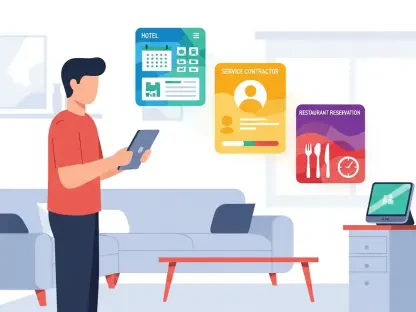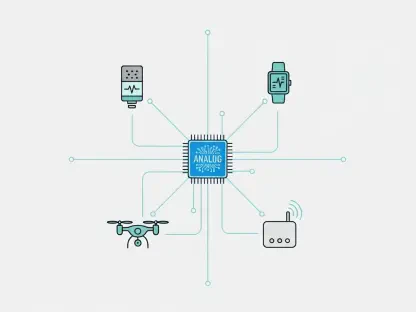E-commerce businesses account for up to 20.1% % of all retail transactions as of 2024; experts predict this will grow to 23% by 2027. While many components contribute to a business’s overall success in this industry, shipping and delivery are among the main contributing factors.
To meet the demands of today’s fast-paced business landscape, efficient last-mile delivery software has become crucial. It helps meet customer expectations and gain an edge over competitors.
Adding Application Programming Interfaces (APIs) and Artificial Intelligence (AI) to last-mile delivery management software has led to transformative advancements. These additions have helped businesses seamlessly navigate the complexities of these deliveries.
With AI revolutionizing just about every industry, there’s scope for artificial intelligence to impact last-mile delivery positively. Here’s how AI can be leveraged to optimize last-mile logistics:
Simplifying Last-Mile Delivery Operations
Last-mile delivery is a delicate balancing act involving various operations, including resource allocation, route management, order management, and tracking. Technology and software play a huge role in enabling a seamless last-mile delivery experience, and AI can enhance this.
APIs and AI have become instrumental in simplifying last-mile operations. Businesses can now connect different software solutions by integrating APIs into their systems. These include order management, route optimization, and last-mile delivery tracking.
Using AI to derive insights allows management to obtain complete visibility of the order and access to real-time monitoring of drivers. AI-driven algorithms help optimize routes, ensuring timely deliveries, which reduces fuel consumption and operational costs.
Reducing Last Mile Delivery Challenges
The last mile is the shortest leg; however, multiple challenges have to be addressed during this stage, starting with the operational cost. Traffic congestions, customer-preferred delivery time windows, and increasing demand for same-hour and same-day deliveries add further complications. Here are a few of the challenges associated with last-mile delivery:
Challenge #1 Rising costs
Last-mile delivery has been impacted by the overall rising costs associated with logistics. Gas prices, vehicle maintenance, and labor costs have all increased, which has a significant impact on delivery costs. In addition, logistics companies need to be prepared for unexpected costs that may arise like order cancellations, missed deliveries due to traffic, or lost/missing packages.
Challenge #2 Order delays
Delayed orders are a stress to everyone in the delivery ecosystem: the supplier, the customer, and the delivery company. Adverse weather conditions, traffic congestion, and infrastructure issues are all unexpected issues that can delay delivery. Additionally, issues arise during peak seasons and driver shortages can compound delays.
Challenge #3 Distances and accessibility
In the post-COVID landscape, customers expect goods to be delivered, regardless of location. This can lead to additional challenges with last-mile delivery as drivers struggle to find adequate parking, navigate traffic-congested urban areas.
There are additional challenges with making deliveries to rural areas where accessibility challenges come to the fore. A lack of formal roads and addresses can lead to additional issues with last-mile delivery.
Challenge #4 Reducing carbon footprint
The last mile of delivery carries a heavy carbon footprint and logistics companies are at pains to find eco-friendly solutions. Carbon emissions in this sector are set to increase by 32% by 2030.
With the best last-mile delivery routing software, APIs and AI can help predict potential delays, offer alternative routes, and adjust delivery windows dynamically.
Transforming the Logistics Industry
AI has been transforming entire industries, and the logistics sector will not be left behind. Last-mile delivery software has made significant improvements, with AI playing a crucial role in its transformation. AI-powered data analytics has helped businesses anticipate customer demand patterns, optimize inventory management, and reduce the risk of stockouts.
By adding Machine Learning to the mix, logistics companies can enhance route optimization to give users real-time traffic updates and historical data. This provides drivers with the most efficient routes, delivering on time and according to customer expectations. AI-driven chatbots and virtual assistants have improved customer interactions, offering accurate delivery information and updates.
AI analysis can improve fleet performance, assisting logistics professionals and planners. This is a significant part of risk management, allowing supply chain professionals to position assets strategically. Machine learning algorithms provide predictive capacity matching, which helps logistics teams plan effectively.
This emerging technology also decreases nonessential shipments and mitigates the company’s number of vehicles on the road, resulting in reduced operational costs and improved efficiency. Better strategic positioning of logistics assets in the field allows for faster delivery, especially to locations during periods of high demand.
Improving Estimated Predictions
One crucial aspect of last-mile delivery software is setting accurate delivery estimates for customers. The best last-mile delivery management software, supported by AI, can provide precise, remarkable estimates by factoring in multiple variables. These variables include traffic conditions, historical delivery data, weather forecasts, and driver behavior.
The benefits of logistics forecasting are enhanced efficiency and effectiveness of supply chain operations, reduced costs, improved service delivery, and optimized inventory levels. This strategic approach not only streamlines operations but also supports better decision-making processes, ensuring that companies are better prepared to meet market demands and customer expectations.
Further expanding on these benefits, logistics forecasting facilitates improved inventory management. With precise forecasts, companies can maintain optimal inventory levels, avoiding both excess stock and stockouts. This balance is crucial for minimizing holding costs and maximizing the availability of products for timely customer delivery.
Additionally, effective forecasting helps in planning the workforce and warehouse space more efficiently, which can lead to significant cost savings and enhanced operational agility.
Moreover, logistics forecasting enhances customer satisfaction by ensuring that products are available when and where they are needed. This reliability can help build trust and loyalty among customers, which is vital in today’s competitive market.
Reduced delays and improved accuracy in order fulfillment help companies retain existing customers and attract new ones. Thanks to accurate forecasts, a company’s ability to quickly adapt to changes in demand positions it as a reliable partner in the eyes of its clients, thereby enhancing its market reputation and competitive edge.
The software improves predictions by continuously analyzing and learning from new data, increasing customer happiness through accurate delivery estimates. Nowadays, customers are even notified via pre-order ETAs for their order delivery. This gives the customer multiple options, and they can place their order according to their schedule.
Benefits of AI in Logistics and Supply Chain Operations
AI has immensely improved performance for logistics and supply chain operations. While digitization helps accumulate historical data, AI helps identify patterns and trends. This allows businesses to optimize their overall supply chain operations.
AI has powered numerous demand forecasting tools to help businesses predict demand fluctuations. These tools also help with inventory adjustments to prevent overstocking or stockouts. AI for inventory management for last-mile deliveries has improved inventory turnover rates and reduced carrying costs.
Conclusion
The delivery landscape in the last mile has been reshaped by merging APIs and AI. Through seamless connectivity and data exchange enabled by APIs, businesses can optimize their operations and provide real-time updates to all stakeholders. AI-driven algorithms enhance route optimization, inventory management, and customer interactions, driving efficiency and customer satisfaction.
As AI advances, its predictive powers will become even more polished, making its position a game-changer in logistics. Embracing the best last-mile delivery software with APIs and AI is no longer just an option but a strategic necessity for businesses to meet targets.
Thanks to the dynamic merging of APIs and AI, the future of last-mile delivery software is here, and it’s intelligent, effective, and customer-centric. Furthermore, the predictive power of AI has enormous potential to transform the logistics supply chain, altering how businesses manage their inventory, streamline operations, and provide unmatched customer service.









